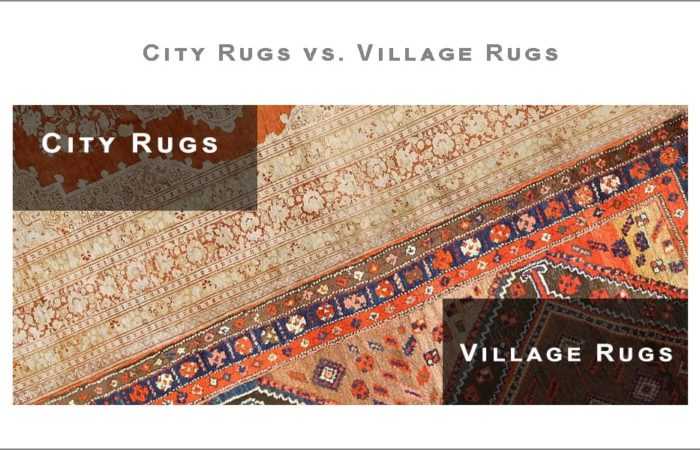Women Weavers of Antique Rugs
In the world of carpets, it’s the women weavers, those hard working ladies behind the loom, who should be appreciated for their unrelenting work and the extraordinary carpets they create. Although many of the names of these talented women weavers have been lost to history, their contributions to the art of Oriental rug weaving should not be overlooked.
When people think of the best rugs, they often recall famous Persian city carpets produced in workshops that were run by master rug weavers who were men. These ateliers have certainly produced some great works, but it’s hard to compare these well orchestrated compositions with the quirky village carpets and tribal rugs that were created largely by women.

Women Weavers selling their carpets in Morocco
These talented women took care of their children and tended to the household tasks needed to sustain their families. They did all of these things while taking time between chores to add knots and decorative ornaments to a carpet that would be used in the home or made to be sold at a village market.
In villages, an entire room might be dedicated to a carpet loom and the product might have been woven to be sold at market to earn extra money. For nomadic rug weavers, the process and day-to-day operations were even trickier. Although their rug weaving looms were smaller and more portable, it was still difficult to be ready to be packed up and transported at any time — but these women weavers quickly became experts.

Iranian Woman Weaving Persian Rugs
The role women play in taking care of the home and weaving carpets is similar across countries and continents. Whatever type of carpet or kilim they are creating, women always seem to add a bit of themselves to their traditional designs. In Morocco, women weave decorative flat weave rugs and luxurious vintage shag carpets. These artists tell stories by adding age old design symbols that mean little to outsiders but have personal significance to the makers and their tribes.
In Turkmen areas, the carpet weaver’s creativity shines through in the elaborate borders, which display a vast level or originality. Women also played a role in workshops, like Kashan’s Motashem atelier. It’s purported, according to Cecil Edwards, that the wife of Haj Mullah Hassan Mohtashem contributed the famous tulip and blossom borders familiar to Arak. Of course, in Scandinavia, women carpet weavers were even more prevalent and well regarded.

Women Weaving Rugs Together
While many of these women did not sign or initial their works, it’s important to remember the significant contributions women weavers have made to the world of vintage and antique rugs.
Why are women the main weavers of area rugs?
Women have historically been the main weavers of area rugs for a variety of cultural, social, and economic reasons. In many societies, weaving has been traditionally regarded as a domestic craft, often performed within the confines of the home. As such, it has typically fallen under the purview of tasks assigned to women, who were responsible for managing household affairs and textile production.
Furthermore, weaving was seen as a skill that could be pursued alongside other domestic duties, allowing women to contribute to their family’s income while still attending to their responsibilities within the home. This flexibility made weaving an attractive option for women seeking to generate additional income for their families.
Additionally, the intricate nature of rug weaving often requires patience, precision, and attention to detail, qualities that have been stereotypically associated with women. Over time, women became highly proficient in this craft, passing down their knowledge and expertise from generation to generation.
Culturally, certain societies have also placed value on the preservation of traditional crafts and techniques, with women playing a central role in upholding these practices through their continued engagement in weaving.
While the landscape of rug weaving may be evolving with changing social dynamics and increased opportunities for women in various fields, the historical precedence and cultural significance of women as the main weavers of area rugs have left a lasting legacy that continues to influence this craft today.
This rug blog about Women Weavers was published by Nazmiyal Antique Rug Gallery in Manhattan, New York City.



